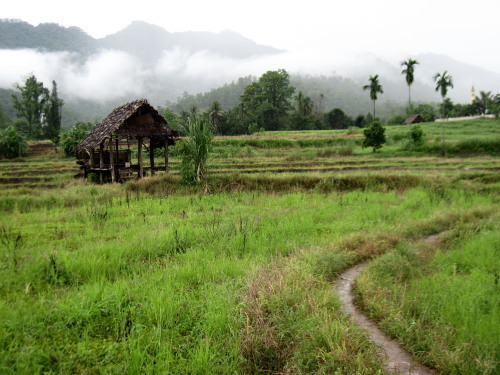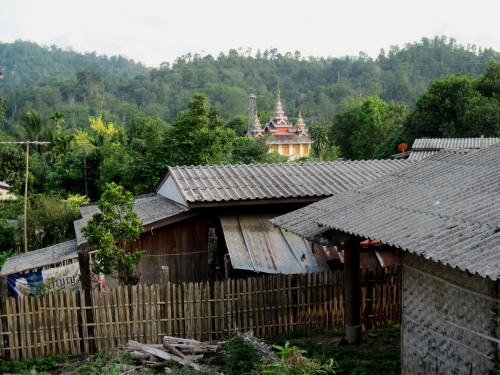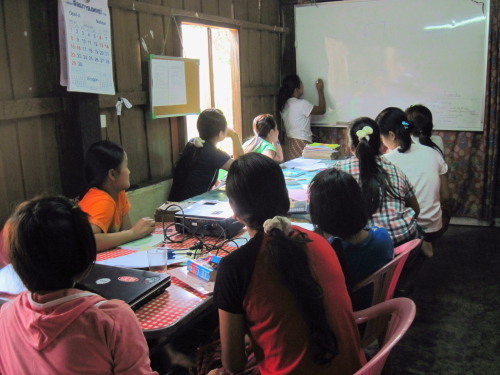Lisa Niver's Blog: We Said Go Travel, page 456
November 5, 2013
Spain and Illinois: Home and back again
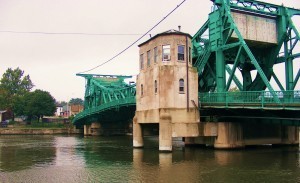 Some people would say that I live in vacationland. Sunny Spain…where the climate rarely disappoints you with a rainy day. History and culture, sun and sand or wine and tapas are your short list of free-time activities. Europe awaits out the back door. If I had unlimited “me” time and equally endless funds, I’d be touring my way across the continent, checking off one more country after each trip. And I would own a little place back home where I grew up.
Some people would say that I live in vacationland. Sunny Spain…where the climate rarely disappoints you with a rainy day. History and culture, sun and sand or wine and tapas are your short list of free-time activities. Europe awaits out the back door. If I had unlimited “me” time and equally endless funds, I’d be touring my way across the continent, checking off one more country after each trip. And I would own a little place back home where I grew up.
Home. Sometimes a difficult concept to explain. I do feel comfortable calling Madrid my home. Last summer before departing on our separate vacations, a friend and I joined the terrace crowds downing cold beers and nibbling on delicacies like jamón Ibérico and Manchego cheese. A little kiss of Spanish flavors to linger with us as we traveled to parts of the world filled with a different set of customs and pleasures.
I was making a quick trip to the US to visit my cousin who was recovering from hip replacement surgery. My vacation wouldn’t be an exploration of new countries; it was an opportunity to revisit the core of who I am — my family and my hometown.
The rush of nostalgia I get seeing certain landmarks is as satisfying as the wonder I experience when sightseeing in a foreign land. Joliet, Illinois might not mean much to the world at large, but I walk into Dan’s Homemade Candies and I smell the autumns of my childhood celebrated with caramel apples or the arrival of spring marked by cream-filled, chocolate-covered Easter eggs. A dinner at Syl’s, just down the road in Rockdale, lets me wallow in local foodie delights. Their classic menu offers a variety of steaks, Ditka-style pork chops, poorboy sandwiches, frog legs, fried chicken livers and a plate of Adam & Eve (ribs and chicken) for the indecisive. Chicago’s famous stockyards may be long gone, but some Midwestern customs are not so easily abandoned.
Infamous Chicago legend Al Capone often took a break from the windy city to enjoy a show at Joliet’s Rialto Square Theater, a beautiful building of Greek, Roman and Byzantine architecture that opened in 1926. On the national register of historic places, the Rialto was saved from demolition when it underwent a six-million-dollar restoration back in the early 80s. And I am grateful. The jewel of Joliet continues to occupy its place in history.
Timeless, imposing structures built from Joliet limestone are scattered across the city. Joliet Township High School, nicknamed “The Castle,” is a favorite, and one of my dearest keepsakes is my mother’s senior yearbook from 1946. If I were to play armchair psychologist, I’d conclude that the strength and permanence represented by this early 20th century architecture give me hope that I will always have a hometown to come back to.
The city has changed over the years, and now casinos and raceways bring in the revenue once generated by limestone and steel. My eyes register the differences, but my heart allows me to conjure up the past that lingers. My father’s workplace disappeared when the stadium was built in 2002; however, the cheers of baseball fans don’t reach my ears. I still hear the rapid click of a little girl’s shoes on a cement floor as she runs helter skelter out of the sunlight into the noisy, dim interior of an auto repair shop to surprise her Dad.
Although my parents have passed on, many relatives and friends live nearby. Each face represents a page in my life. Every relationship helped form a part of me that has kept me grounded or pushed me towards adventure. I am running errands for my cousin and the familiar hum of the car’s tires as I cross a drawbridge over the Des Plaines river welcomes me. Memories rise up like mist off the water, and I think I hear my mother’s voice telling me stories of her youth while we are stuck waiting for barges to pass and the bridge to come down. Out of the corner of my eye, I see the shadow of a daring would-be suitor who used to dive off the bridge to attract my Mom’s attention. Her past. My present. The spire of the church where I was baptized comes into view. My mind clicks like a Nikon, storing each vignette to take back home again.
About the Author: Born and raised in Joliet, Andrea Isiminger inherited a love of travel from her father who took the family on two trips behind the Iron Curtain in the 70s to seek out relatives. She has lived in Argentina and currently resides in Spain.
The post Spain and Illinois: Home and back again appeared first on We Said Go Travel.
November 4, 2013
A Vietnamese Wedding
They told us the wedding was Sunday at six.
Later on, we found out that was 6 a.m., meaning not-so-bright and early in the morning. But from the looks of things, it was a big deal. The son of our hostel owner was getting married and all week, the staff had been setting up with decorations, an archway in the entrance and firecracker lights. Waking up with the roosters wouldn’t usually be my preference. And weddings don’t normally interest me. But the groom invited us and it was going to be held right there at the hostel and I didn’t know when I’d get the chance to see another Vietnamese wedding, so I went ahead and set my alarm clock for the crack of dawn.
I woke up at around 4:30 a.m. Asia stayed up later than I did last night, so I was on my own. I got dressed and went downstairs. Hardly anybody was there. It was raining outside and I wondered if the wedding would be canceled. Thirty minutes went by. The crowds started coming in, all dressed up in suits and gowns. But no bride. I was told that, as is tradition, the groom’s family goes to the bride’s house to give gifts to her family and pick her up. I watched from the side of the alley as they filed out, stepping around the mud puddles, and climbed into a row of taxis. I stayed behind and went back to the room.
An hour later, the phone rang. “The bride is coming now,” Trang, the receptionist, told me. As I headed back downstairs, everybody was going upstairs. I followed them to the roof, where tables were arranged with cans of lemon-flavored Iced Tea, muffins and dried watermelon seeds.
Around that time is when I found out that I wasn’t allowed to see the ceremony. I wasn’t alone. Nobody except for the immediate family was allowed in the rooftop Buddhist temple where the ceremony was taking place. That wasn’t a problem. The father invited me to sit down at one of the tables and eat with the families.
One of the bride’s cousins spoke English well enough and was able to answer questions I had. He told me the wedding date is chosen specifically based on “lucky days” on the Chinese lunar calendar. The morning, he said, has more positive energy than evening so traditional wedding ceremonies take place before noon.
Marriages were arranged in the past, so proposing wasn’t in the picture. But that’s changing. Younger generations, he said, are starting to propose now because they like how it’s done in the West.
“They see it in the movies,” he said.
It was around 10 or so when the wedding ended. Everybody left to go to a family restaurant near Le Loi Street for the reception. I went to the room. Asia was out of bed at that point. I used her dressing time for a moment to rest and then we went downstairs to get breakfast.
The post appeared first on We Said Go Travel.
Honolulu: Meet Mia Coffin of One Please
Meet Mia Coffin at Park Restaurant
2885 Kalakaua Ave
Thursday November 7
5pm-7pm
Mia Coffin is a waitress, a world traveler, and would-be anthropologist. Coming from a large family in a small town in California she continually escapes her normal life in search of distant shores and adventure. Being an experienced traveler, Mia knows if things can go wrong they surely will––just how wrong, Mia recounts as she travels solo through Indonesia, Lebanon, Africa and New Zealand.
Mia is charged by an angry elephant, kidnapped by a Hezbollah drug lord, and gets caught up in a in a baby smuggling ring––all the while keeping her wicked sense of humor and never forgetting to email her worried mom back home. She fumbles with strange cultures, unfamiliar languages and unforgettable characters and realizes just how precious her home and family are to her. Invariably, Mia steps up to each ticket counter throughout her travels and requests––One, please!
One Please is available on Amazon.com in paperback and kindle.
Park Restaurant: Park is a new Waikiki restaurant specializing in unique Mediterranean cuisine. Come visit us today at Park for the best in fresh new Waikiki Dining!
Lotus Honolulu: A Place to feel at HOME in Hawaii! from Lisa Niver Rajna
The post Honolulu: Meet Mia Coffin of One Please appeared first on We Said Go Travel.
November 3, 2013
Illegal English Lessons: Volunteering With Refugees
Only dust remained on the chalkboard, a wispy reminder of the lessons that covered it moments before. Outside, the motley assortment of sandals that lived on the front step were hurriedly dumped into the closet and the water basins cleared of dirty dishes.
Rickety wooden shutters were slammed closed; overhead lights were switched off; five Burmese refugees and one confused American teacher were rushed to the farthest bedroom and told to be silent.
This was not the way I expected to spend my final English class.
After three peaceful months volunteering with a group of ethnic Karenni Burmese women in Mae Hong Son province, Thailand, the kingdom’s Immigration officials were finally aware of our secret location.
The threat had always been present, poking around the front gate with our neighbor’s chickens or seated patiently inside the classroom. It’d been explicitly defined the moment I joined the Burma Volunteer Program.
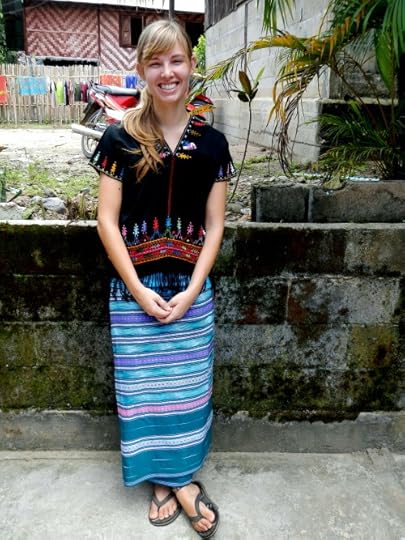 “Do not enter the country on a volunteer visa, avoid conversations about what you’re here to do,” read the instructions on my acceptance letter.
“Do not enter the country on a volunteer visa, avoid conversations about what you’re here to do,” read the instructions on my acceptance letter.
For several years, the BVP has placed journalists, teachers, activists and passionate people with Burmese refugee organizations operating inside Thailand. When five new recruits – an eclectic mix of Americans, Aussies, Israelis and English – first circled the floor at a 2012 orientation, this threat was reiterated.
“If questioned about your host organization, explain that you are just a backpacker asking for directions, or looking for a temple. Play dumb, talk about how friendly the locals are, how much you love Thailand. As foreigners, you will likely be left alone.”
Those answers now seemed insufficient, should any government employee find me huddled in this room of anxious silence. Back pressed guardedly against the door, I felt more like a secret agent than an amateur educator.
Since the end of British colonialism, over 84,000 ethnic peoples have fled from Myanmar’s violent civil conflict to the relatively safe soils of its eastern neighbor. Yet because Thailand is not party to the 1951 UN Refugee Convention, the interim bamboo villages strung along the country’s border with Myanmar – or Burma, as my girls still called it – are technically illegal.
By law, no refugee can drive a vehicle, own property, seek employment or leave the camp without permission. Establishing and running a women’s rights group, which necessitated all these things, broke more rules than I cared to count.
What would happen to the staff and students now? Worries sidled up with the shadows, forcing nervous fingernails between my teeth.
I couldn’t tell if the girls were frightened or simply surprised by the sudden change in events. Most reclined on the wooden floor, peering curiously through the wall’s woven slats whenever a truck engine rumbled outside.
“Teacher OK?” Taw Le Pay asked every so often, concerned about the young woman who was protecting the entrance.
Because I was scared; scared and nervous and naive enough to hope that if I lied about my job here, a uniformed official would believe it.
If caught, the brave ladies beside me would be lucky to receive an unnaturally expensive fine. But debt was nothing compared to deportation. These beautiful girls were not freedom fighters or political activists, merely concerned young women suffering for events beyond their control.
“We can watch movie, teacher?” Rosie sat up and gestured toward the laptop I’d taken from the classroom. One of the girls giggled, another yawned.
“Do you think that’s ok?”
Originally, our curriculum had featured prepositions and questions words; to their delight, it soon transformed into fairy tales and chick flicks with upbeat plot lines. Now, watching them calmly accept the adversity of another unfair situation, I wondered which would help them more: one final English quiz, or the Western optimism that everything, always, turns out right.
“Ok, very quiet,” she whispered, smiling. Even when presented with the hardest of grammatical challenges, I’d never seen my students frown.
“What do you want to watch?”
They conferred in Karenni. “Magic movie, teacher,” she requested.
It was the first film we’d shared – Ella Enchanted – a whimsical story with handsome princes, ugly giants and a lot of magic.
So this was the way I spent my final English class: cheering for the damsel in distress, booing at the evil villain and applauding an imaginary world where only happy endings were possible.
Due to financial and political constraints, the Burma Volunteer Program no longer facilitates the placement of volunteers with Burmese refugee organizations in Thailand. Those wishing to volunteer with ethnic refugees are encouraged to communicate directly with grassroots refugee organizations via the BVP’s website.
The post Illegal English Lessons: Volunteering With Refugees appeared first on We Said Go Travel.
South Africa: When Lovers Unite
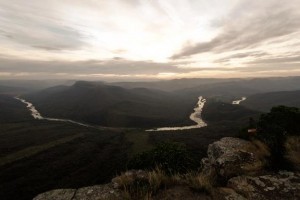 It was May 17, 2012 when my five best girlfriends and I would embark to the far reaches of South Africa as bridesmaids and bride, to rejoice in the celebration of something beautiful. The excitement that filled our hearts was beyond anything I’d ever felt. Three plane rides, twenty two hours of travel time and one misplaced suitcase later and we were finally on our way to the groom’s home. We were in a new world, refreshed by what met the eye.
It was May 17, 2012 when my five best girlfriends and I would embark to the far reaches of South Africa as bridesmaids and bride, to rejoice in the celebration of something beautiful. The excitement that filled our hearts was beyond anything I’d ever felt. Three plane rides, twenty two hours of travel time and one misplaced suitcase later and we were finally on our way to the groom’s home. We were in a new world, refreshed by what met the eye.
During our stay we managed to get a hold of an economy van which we drove from Cape Town up to Port Shepstone, a ten day affair that opened our eyes to the vast, open wonders of South Africa. The waves we caught, the mountains we climbed, the game parks we roamed, and the South African hospitality we felt were all just a milestone leading up to one important moment in our lives, the union of two lovers whom had spent two years apart upon their meeting. It was on this trip that we would rejoice and unite.
Nearing the big day, the girls and I were scrambling to get everything together. From painting wooden signs and sewing fabric, to crafting bouquets and soothing the bride, we girls were on a mission to make this happen. Little did we know, we were getting ready to step into a fairy tale.
June 7, 2012, was the day when two lovers united. Aside from the bride, the girls, the groom’s mother and a few friends packed the car and we were off to a far away farm in Oribi Gorge. Driving down an isolated dusty, dirt road, we were greeted by endless, lush fields of green and the warm, golden sun. We had reached our destination, overlooking a river gorge somewhere in the South African bush. The morning was fresh and the air still. We spent hours setting up the wedding site, hoping we were recreating what the bride had envisioned. After a long morning and afternoon, everyone left to prepare for the ceremony.
I didn’t quite know what to expect for my first bridesmaid experience at my best friend’s wedding. What I did know is that this day we would become fictional characters in a fairy tale. The ceremony was filled with love and passion, surreal beauty and the heart of God. Every face, glassy eyed, every mind pacified. We were the witnesses of a moment in life when lovers unite.
It was after the ceremony that I found my way to the edge of the cliff. I sat alone and pondered the meaning of life and friendship, travel and the world’s splendor. I let my feet dangle freely below me, as the sound of the river down below washed me clean. The commotion behind me blurred, I was captivated. I was free. This moment took my breath away. There was not a single word that could creep from my lips. I was awe-inspired.
About the Author: My name is Stephanie Villavicencio and I’m 23 years old. I love writing because it’s a great outlet for me to share my experiences and in turn to hopefully inspire people! I believe that following my passions is the best way to live and I live to invoke those feelings in others. Find me on Facebook.
The post South Africa: When Lovers Unite appeared first on We Said Go Travel.
November 2, 2013
New Hampshire: Revisiting Lake Winnipesaukee – Part 2

The Farmer’s Breakfast Plate (half portion shown)
The day prior was long yet rewarding, still it’s hard to sleep when the fresh New Hampshire air beckons. Not to mention the internal wake-up call for a Farmers Breakfast plate at The Village Kitchen (734 Whittier Hwy, Route 25) in Moultonborough. Their sign states Real Country Cook’N, and that is exactly what you’ll get.
I recall my Uncle polishing off the big breakfast platter with one hand while reading a free local paper with the other. Said platter consists of two of a bunch of things; 2 eggs any style (over easy all the way), 2 bacon strips, 2 slices of country fresh toast, 2 Pancakes (or in our case French Toast), 1 piece of thick cut ham, crisped up hearty home fries, a small bowl of baked beans on the side, and bottomless coffee in a heavy ceramic mug adorned by local business ads. Compared to city prices it’s still a great value at $8.79. We added a side of Corned Beef Hash for good measure.
The meal was more than just brunch, it was human fuel for our planned circumnavigation of Lake Winnipesaukee (about 71 miles/114 kilometers). On our way clockwise around I saw the sign for Moulton Road which reminded of a guy I met in a Boston themed bar who’s last name was Moulton. According to him, his namesake ancestors founded the town of Moultonborough. A web search concurred that the town was given that name based on several founders from the Moulton family (circa 1763). Once heading down the Eastern side of the Lake, I started recalling times I would accompany my Dad and Uncle to various marinas on their eternal quest for boats.
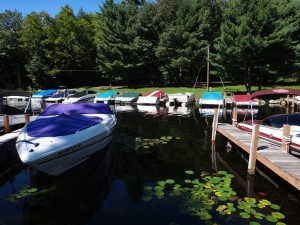
Not the lakes biggest marina, but still nautical.
Our next destination (about 18 miles/29 kilometers) around the lake was Wolfeboro. The welcome sign stating it being the oldest summer resort in America. I’ll admit Wolfeboro is a classic in the department of quaint lakeside towns, and comes with plenty of cafes, ice cream and fudge shops.
To combat the inevitable after brunch sugar low we tried a little place called Lydia’s Café (33 N. Main St.) with it’s fitting painted engraved wooden sign hanging on links of chain. The Blackberry Cream Soda blended with yogurt was really notable and worth all of the $3.21. There are a plethora of gift shops (the same goes for general stores) around the region, but if you are looking for a standout, you won’t be disappointed by Black’s Paper (as in Newspaper) & Gifts also on Main Street. They’ve got plenty of T-shirts and printed apparel plus all the souvenirs you would expect in a summer resort town.
We take an almost highway looking route into the town of Gilford, home to Gunstock Mountain Resort; a diverse recreational area with surrounding hiking trails, camping, zip-lining in summer and skiing in winter. For a little shopping spree the outlets at Tilton, a little ways south off the 93 are a good bet. Sawyer’s Drive-in is on the same route. For more about lakeside eats see my previous article on Lake Winnipesaukee. Despite holding out for a later Lobster fix, I stepped in briefly and noticed a blaring change – digital screens had replaced their old fashioned menu signage.
Heading further around the lake is the largest town on the lake called Laconia. It’s known for one of the countries big motorcycle rallies in June. Then for everyone’s inner child “The Weirs”, combines penny arcades, bumper cars, fried dough, pizza by-the-slice, gift shops, a touristy railroad station and a ticket office for Scenic Lake Cruises (including the well regarded Mt. Washington). There’s also a public beach so some refer to the area as Weirs Beach. At the junction back onto Route 3 you find the iconic Tamarack Drive-In with one of the regions more famous Lobster Rolls and other New England treats like fried clams & scallops.
On the right cambered downhill road towards the lakeside town of Meredith you get some scenic lake vistas (depending on foliage density). First you will pass by Funspot (the world’s largest arcade), Pirate’s Cove mini golf and the former J.B. Scoops ice cream parlor. I’ve noticed places around the lake changing owners with every passing summer, which can dull some of those sentimental feelings. One of those places, Lee’s Candy Kitchen, bought and expanded from it’s already sugary good self is located in the Mills Falls Marketplace (they also stock a bunch of wicked fudge).
A restaurant worth mentioning across the street is Lago which serves Old-world styled Italian cuisine. There are great views of the lake from the dining room to go along with attentive service and fair prices for upmarket dishes. My cousin mentioned they serve a tasting of Limoncello with your meal, a nice touch, but don’t quote me on it (and be sure you are of legal drinking age).
For a different kind of food stop we jump off at Moulton Farms, famous for pies, jams and fresh sweet corn. They also have a serious selection of ‘Whoopie’ Pies (a giant dessert sandwich of various dense cream fillings surrounded by two soft baked cookie cakes that get on your fingers unless you eat it with a knife and fork).
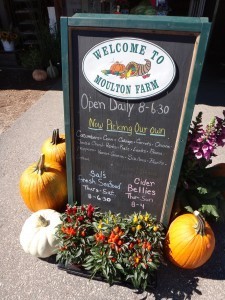
What’s in season, you ask?
We somehow managed to resist eating again, holding out for our next stop at the Red Hill Dari (literally a little red house) in Center Harbor the last town before our circle of the lake was completed. The place doesn’t look like much, but packs a good Lobster Roll punch. They use only with claw and knuckle meat and a little lettuce with a touch of mayo on a mildly toasted hot dog bun. Served with fries it is usually eaten with dreams of the next. Prices for seafood are usually handwritten over printed menus, due to market fluctuations (typically upward). It also has a boatload of ice cream and shake options.
Soon our half-day loop (during peak summer season it could take longer) would be complete. Jo-Jo’s Country store down Moultonborough Neck Road was soon in sight for provisions. This time more seasonal New England produced beer was purchased as well as makings to accompany Angus hotdogs. Seafood salad, tuna salad and coleslaw were also weighed out for a future picnic meal.
Getting back with about an hour or so of good sunlight we opted for some golf carting and a bit of beach side sunning. Only I was brave enough for a chilly dip. Once my pores had slammed shut the water was even more pleasant than the outside air. Wrapped in two towels, I was quickly dried off.
It was time to man the grill over looking another fabulous sunset. I cooked the 6 Angus hot dogs and toasted buns to match along with caramelized fresh red onions. We feasted on our BBQ dinner as the hues of dusk appeared. Having to miss my friend’s concert was further from my mind now that my belly was filled and the Boston Red Sox were on again. Despite already eating our way around the lake, sublime Lobster bisque from The Bob House (520 Whittier Mountain Hwy) would be in my dreams and so would the next food sampling visit to NH (New Hampshire).
Jeff Shoer: Having traveled the earth in search of a happy stomach. Jeff continues to follow a path to food loving destinations. He hopes to walk off the calories en-route to more great tastes. Read more about me and my passions for food in travel below.
The post New Hampshire: Revisiting Lake Winnipesaukee – Part 2 appeared first on We Said Go Travel.
Japan: The Ramen Shop at the Top of the World
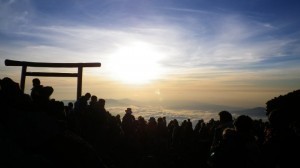 “Did you ever hear that proverb about Mt Fuji?” my friend Yuko asked me over a green tea latte one morning. “It goes something like: He who doesn’t climb Mt Fuji is a fool, but he who climbs it twice is a bigger fool…”
“Did you ever hear that proverb about Mt Fuji?” my friend Yuko asked me over a green tea latte one morning. “It goes something like: He who doesn’t climb Mt Fuji is a fool, but he who climbs it twice is a bigger fool…”
“What’s that supposed to mean?” I laughed.
“Well, maybe we should climb it, find out for ourselves…”
I’d arrived in Tokyo in the winter, when the mountain was at its most pronounced – on clear days the sun caught the snow-capped dome in such a way that reflected the rays towards the city like a giant mirror. Each time I’d imagine the view from the top, thinking of Yuko’s words. I resolved to make the climb, but it would have to wait – the climbing season was limited to a brief window mid-summer.
In the meantime spring came and Fuji-san turned suddenly demure. The sun melted away the snow and a humid haze blurred the view. Still, on rare cooler mornings it would momentarily re-appear, reminding me of my goal. Soon spring departed, taking the last of the sakura-blossom with it, and the local papers announced the beginning of the climbing season.
“Mt Fuji is easy,” a lady in a yukata told me at the tourist information desk. “And don’t worry about eruptions, it hasn’t erupted for about 300 years,” she added, her words less than comforting – I hadn’t even realised it was still an ‘active’ volcano. She wrote down bus times on hello-kitty headed paper, “the bus to the start-point takes two hours, the climb up about seven. Most people climb overnight to make it in time for the sunrise.”
“Any other advice?”
“Take a torch and some thick clothes, it’s dark and cold up there. But there’s a ramen shop at the top to warm your bellies at least.”
We left the city in sunglasses and t-shirts, arriving at the mountain to rain, mist, and fears for the expedition.
“Is it safe to climb?” Yuko asked the bus driver. He laughed, pointing to the hoards of neon-colored jackets already heading up the mountain. We took this as a positive answer, but changing into our warm gear inside the rest-station, we wondered whether he was in fact laughing at the folly of the climbers. We thought of turning back – would continuing now make us merely fools, or bigger fools?
We decided to climb.
Two hours in and we were feeling great. The first section was a gentle, well-trodden tail. The rain had subsided, and fueled by rice-balls we overtook a French tour group, their leader carrying the Tricolor flag. We were a third of the way, making good time.
Midnight soon came, tiredness too, and though still visible the lights from the city no longer lit our way. We paused intermittently for breath and squinted down below. To the east, Tokyo was now a distant sea of fireflies, lights twinkling dimly through the mist. To the west an infinite pitch darkness. We switched on our head-torches and resumed.
Five hours in and the hunger came. We stopped before a steep incline for another rice-ball, the last I’d brought. “I told you to pack more,” Yuko reprimanded me. We checked the map – still another two hours at least. The lights below were gone and we could see nothing below – we must’ve been above the clouds, hadn’t even noticed passing through them.
Conversely our growing hunger helped us through the final third, distracted us from the dark monotony. One foot in front of the other in front of the other. Minutes passed that felt like days. The light on the head-torches began to fade. “I told you to bring more batteries,” Yuko again. A few more days passed and the mist revealed something just ahead: I looked up and saw the torii shrine-gate above, signaling the end of the climb.
I checked my watch: 3.56am. Thirty minutes until sunrise. Shivering, we saw a queue forming a little further along, and the smell of hot pork soup drifted towards us. The tourist clerk hadn’t been joking – the ramen shop!
Some words are overused. But as I sat 12389 feet high, on the edge of the caldera, devouring the best bowl of ramen I had ever eaten while watching the horizon begin to glow, the sun stir to life beneath it…awe was the correct word. The sun climbed higher still, setting fire to first the clouds, before lighting up the whole sky, taking the cold with it.
I thought of Yuka’s words, the wisdom of repeating this journey. I’m not so arrogant as to question generations old Japanese proverbs, but climbing it again feels like a good idea – I’ve had a taste of awe, and I have to feel it again.
About the Author: Matthew first came to Japan six years ago. Several countries and countless bowls of ramen later, he has settled in Tokyo where he teaches English.
The post Japan: The Ramen Shop at the Top of the World appeared first on We Said Go Travel.
November 1, 2013
India: There’s Something About Lord Buddha That …
Touristy holy places demand a certain reverence even from atheists and visitors of different religions. But what happens when flippant tourists fail to differentiate a museum from a mausoleum? In most cases, guardians of the sanctum will take the culprits to task, or devotees themselves will play moral policemen. Even if a scuffle does not break out, it just leaves a very nasty aftertaste.
I’ve seen this play out at Montmartre’s Sacré Cœur, as well in the Tomb of King David in Jerusalem. Mobs of tourists jostling each other, babies screaming, mothers punching their pink mouths in retaliation, and then the guards and the faithful swearing down heavily. It is impossible to make a moral judgement on either party, and it feels like the pious are being tested in fire to see if they can live up to the tenets of their respective faiths.
Some years back, I was headed to the Mahabodhi Complex in Bihar, one of the holiest sites for Buddhists as this is where Lord Buddha attained Enlightenment under the Bodhi Tree. As the car swallowed the miles on a shiny highway into the Indian state of Bihar, we reached Bodhgaya and stepped into the UNESCO Temple complex. Like I expected, it was devoid of superciliousness on the part of its devotees. Donation boxes were few and far between, and not a single monk was to be found begging for alms.

The Mahabodhi Temple Complex
A local Bihari tourist guide took us around the sprawling complex and explained the history behind each structure, garden and pond. His constant and only refrain was, ‘Emperor Ashoka built. Muslim destroyed.’
This is why they say that a half-truth is more dangerous than a whole lie.
We finally reached the sacred Bodhi Tree. You might not believe this but the temperature actually dropped several degrees under this particular tree (and no other). I might add that the daytime temperatures were a blazing 38-40 degrees. All was quiet and restful until a family with several children came along, the adults hysterical with delight on seeing the Bodhi Tree from long-forgotten text books, come to life right before their eyes. A passing monk merely stopped with a twinkle in his eye and raised a finger to his lips. The troupe immediately quietened down, chastised by this humble, friendly gesture.

Then came along Thai tourists who also wanted to have themselves photographed against the tree. I watched a Westerner scowl at them in disgust as if their touristy behavior degraded the sanctity of the holy tree.
And then came surprise number 2: another passing monk who signaled to them that he would take their pic so that they could all be in it together. He later even posed with them.
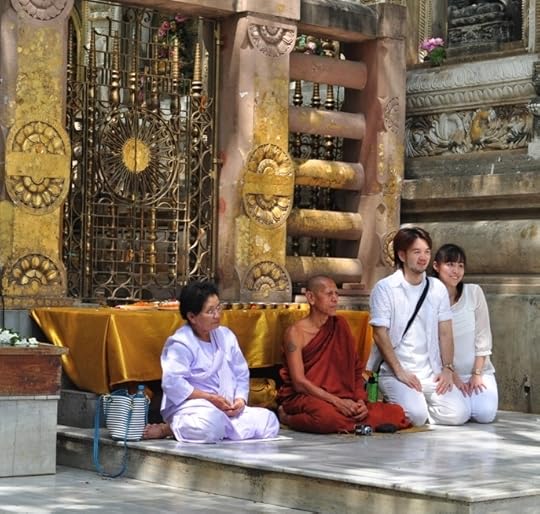
Monk and the Tourists

The Monk is the Photographer

Mobile Phones Switched Off!
Next in line to commit a faux pas was yours truly, when my mobile phone started to ring loudly inside a holy shrine where monks and lay persons were in deep meditation. A cacophonous sound that reverberated mercilessly while I groped through my sack for my phone, and it evaded me (this is what they call Murphy’s Law). While fumbling in embarrassment and disappointment at my own negligence, I caught sight of a few monks still with their eyes closed, with an amused, knowing smile on their lips. What, what! Shouldn’t I have been sshhhed at, rebuked and signaled out with damning eyes by then? I think I would have certainly done that!

Meditating
This was one of those ‘Moment of Truth’ times where I finally came to realize how the ideologies of religions can shape the behaviors of their faithful. As I managed to locate the phone and silence it, a few monks even broke into a smile (eyes still shut), palpably sensing my relief. Memories of the previous day at Varanasi’s Kashi Vishwanath Temple came flooding back as I remembered the astute priests and touts profiling the crowds better than the Interpol, Mossad and FBI put together, all in the hope of making a quick buck, by proposing to palm read, get you the best ‘pooja’, or simply take you ahead of the serpentine queue. The organized chaos was regularly intercepted by distraught women devotees who were felt up by anonymous grubby paws, taking full advantage of the crowds. Photography was out of the question as all visitors were made to deposit their shoes, bags, mobile phones and cameras at shops several meters outside the entrance. Even wallets and passports were checked!
And then… I snapped back to the present, to this Über cool shrine whose believers would make Gautama Buddha very, very proud!
Like a monk in Burma told me, ‘It is not without reason that Buddhism was born in India and died here too’.
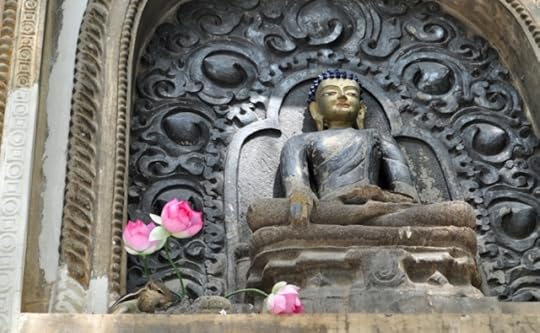
Gautama Buddha Forever
The post India: There’s Something About Lord Buddha That … appeared first on We Said Go Travel.
Top 5 Greek islands for 2014
Top 5 Greek islands for 2014
Despite the economic downturn, Greece is still one of the most popular holiday destinations for Brits. It’s easy to see why; her islands offer beautiful weather, spectacular scenery, miles of sandy coastline and an abundance of activities.
However, every Greek island is a little bit different. So, if you’re looking at Greek Monarch holidays 2014 and can’t decide where to go, check out this rundown of the top five islands.
1. Rhodes
If you’re something of a sun worshipper, Rhodes is definitely the island for you as it has claimed the status of ‘the sunniest place in Greece’. As well as hours of sunshine and fantastic beaches, this Dodecanese Island also offers a glimpse into the Greek culture.
Take a trip to the Old Town and explore the acropolis. Climb up the walls for breathtaking views of the Aegean Sea.
2. Zante
Also known as Zakynthos, Zante is a popular Greek island with an interesting landscape. The beaches are fantastic, whether you’re looking for peace and quiet or an action-packed watersports holiday, you’ll find somewhere to enjoy yourself
There’s also a busy nightlife at Laganas – which also happened to be famous for being home to the endangered Loggerhead turtles.
3. Skiathos
One of the Sporades Islands, Skiathos is a favourite with holidaymakers wanting a slice of luxury lifestyle. It attracts a diverse crowd, from young families looking to enjoy a week on the beach, to jet-setters looking to relax by the pool with a cocktail.
4. Corfu
A holiday to Corfu gives you chance to kick back and relax on one of the many beaches, soak up the sunshine and escape the stress of life back home. It’s a great destination for families, couples and groups of friends.
Whether you want to paint the town red in Kavos or explore the UNESCO World Heritage Site, you’ll find plenty to do.
5. Crete
One of the most popular and the largest Greek island, Crete is a wonderful holiday destination. It offers you beautiful clean sands for sunbathing and crystal clear waters for swimming, snorkelling or water sports but the landscape inland is just as impressive. What’s more, Malia also has a vibrant wildlife, where you’ll be able dance the night away.
There are hundreds of islands of the coast of mainland Greece, but these few made the top five list because of their fantastic resorts, busy nightlife, amenities and natural beauty.
So, where will you go next summer?
About the Author: Catherine Lavinia works as a freelancer in advertising and marketing. She likes to travel with friends and share the joys of travel with others. She enjoys taking photos of places, people and nature and reading interesting books such as Wuthering Heights and Vanity Fair .
The post Top 5 Greek islands for 2014 appeared first on We Said Go Travel.
Taiwan: Rainbow at Kenting
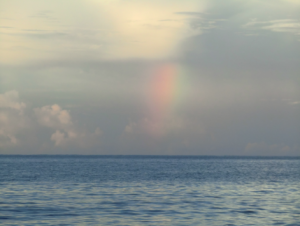 We drove past a typhoon-torn fish farm, an oyster-embedded island and a highway lined with betel nut kiosks to reach the southernmost tip of Taiwan, Kenting National Park. By the time our car was skirting the coastline, it was midday and the sun kissed every cantle of the earth.
We drove past a typhoon-torn fish farm, an oyster-embedded island and a highway lined with betel nut kiosks to reach the southernmost tip of Taiwan, Kenting National Park. By the time our car was skirting the coastline, it was midday and the sun kissed every cantle of the earth.
As the car pressed onwards, my mother reminded my siblings and I that we’d been here once since we’d moved to Hong Kong. As a child, do you remember? My mom asked me. I saw the turtle-rock to my left and the boundless stretch of sea to my right but could neither recall the forest’s wildwood smell nor the salt-tinged breeze of the sea.
Then the car curbed into the gates of the hotel and for a moment only blocks of buildings stood before the ocean and us. Tourists crowded the lobby and luggage, tugged across the floor, made a dim, grumbling sound.
When we reached our rooms and unpacked our bags, my sister suggested we go for a swim. The beach stretched before our eyes, inviting and glinting. We ran towards it, swimsuit-clad. But the sand was hot and electric and the space of water we were allowed to swim in was circumscribed. My brother took a swift glance at the glittering beach and remarked, it’s not much – a harsh jibe considering we’d spent four hours in the car to get here. He retired indoors.
The Kenting beach didn’t strike me as particularly different from other beaches – the sea was a cerulean blue, the tips of its waves scintillating under the sun, but it was not bluer than other waters, nor was the sand softer than the sands of other beaches. We were a couple of hours from my mother’s hometown, we wouldn’t return to Taiwan for maybe another year and this was the ‘family trip of the summer;’ yet nothing about the beach struck us much that afternoon.
Perhaps this would have been my lasting memory of Kenting beach were it not for the next morning.
In the morning, I woke early and walked out to watch the waves wash the sand and slide back into the sea. The leaves of the flowers planted next to the beach were laced with dew from the fresh morning rain and zephyrs skimmed treetops. I made my way up the sand dunes as water lapsed slowly at the shoreline. The beach had transformed overnight; it wasn’t crowded by arm-float wearing children hollering at each other or lifeguards on patrol motorbikes, revving across the beach. The sand was not burning under the beam of the sun but cool and pleasant to tread, the dune almost malleable below my feet. The beach carried a quiet grace, unperturbed by any afternoon clamor. An old lady clutching an umbrella was making her way up the sand dune a couple meters away.
Then I spotted from my peripheral vision – the way one would notice the first rain drop to hit the window – a spot of colour that smudged the horizon ahead. It was a rainbow, not the thick arc one would usually imagine but a dash of colour, a blur that dabbed the horizon like blush on a blue complexion.
It hovered like a mirage, soft and malleable, and it seemed that the entire beach was transformed by its presence. For the first time, I was moved by the Kenting beach and in awe of its morning fragility. Before me was a fleeting, unique spectacle of Kenting National Park; although the park is a popular getaway year-round, none of its postcards can adequately capture the smidgen of colour that brushed the sky that morning.
To have a rare, awe-inspiring moment such as this one – however momentary – in a tourist-crammed vacation spot is truly rewarding for any traveller who seeks a quiet respite.
Taiwan is my hometown, yet there is so much of it I haven’t explored. I had gone to Kenting National Park, hoping to find something amazing, and had not found it the first day; I’m grateful that the rainbow dabbed the sky the next morning so that I could take away with me the memory of that dash of colour in a sky, a gem of my travels.
About the Author: May Huang was born in Taiwan. She currently lives in Hong Kong and writes articles for the Young Post. Her head teeming with crotchet notes and different rhymes, May is determined to balance her passions for playing the violin and writing with her schoolwork. Read her blog here www.may-theforcebewithyou.blogspot.com
The post Taiwan: Rainbow at Kenting appeared first on We Said Go Travel.
We Said Go Travel
We Said Go Travel is a global community of over sixteen hundred writers with articles from every continent.
Stories are shared with photos and video from a perspective of the transformative power of travel. We Said Go Travel has hosted live and online events as well as travel writing contests around the world. ...more
- Lisa Niver's profile
- 57 followers



